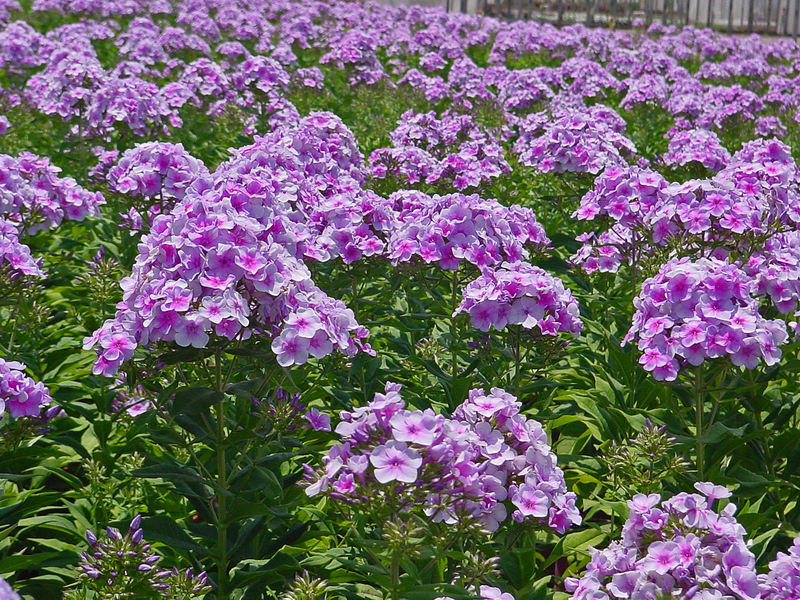Summer Phlox
Phlox paniculata
Click here to download a PDF of this plant information page (for printing).

Sun Exposure: Full Sun, Part Sun
Season of Interest: Summer
Bloom Time: June - August
Bloom Color: White to Purple
Height: 24 to 36 in.
Spread: 24 in.
Spacing: 30 in.
Water Needs: Average
Maintenance: Deadhead
Soil Type: Clay, Loam, Sandy
Soil pH: Acidic, Neutral, Alkaline
Soil Drainage: Well drained
Pests: Slugs, Spider mites, Phlox bugs
Diseases: Powdery mildew, Root rot
Wildlife: Bees, Butterflies, Hummingbirds

Description:
Summer phlox (Phlox paniculata) is a low maintenance plant that adds a burst of color and interest to the summer garden. The Phlox genus belongs to the Polemoniaceae, or "Jacob's ladder," family and garden phlox is valued especially for its large, long-lasting blooms The flowers bear a mild fragrance and occur in a wide range of colors appearing in panicles at the tops of 2-to-3-foot stems. These perennials also attract hummingbirds and butterflies. As an additional bonus, their sturdy stems render them a great choice for cut flowers. Summer phlox grows in upright clumps, and it is a moderately tall perennial. The species name of paniculata refers to the "panicles" of blooms (flower heads) held atop its stalks. The foliage is also attractive but can be marred by powdery mildew. For more information see:
plants.ces.ncsu.edu/plants/phlox-paniculata
Care and Growing Tips:
Considering the value that garden phlox flowers add to a landscape, the care that they need is minimal. If located in a sunny spot and provided with a soil that drains well, they should thrive and come back year after year. Even their biggest problem, a disease known as powdery mildew, is rarely fatal but it can spoil their appearance in late summer and fall. Deadhead the spent flowers to prolong the blooming period. Regularly weed around your plant so that weeds do not sap its strength or rob it of the water it needs to get through the summer. Garden phlox attracts bees and other pollinating insects to the yard so you want to avoid spraying with insecticides or herbicides that can kill them.